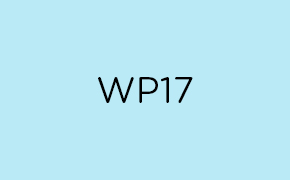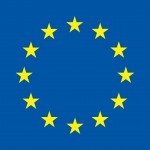Objectives:
General objectives of the HEALS pilot European Exposure and Health Examination Survey (EXHES) are to:
- Implement new birth cohorts of children including singletons and twins in order to collect new harmonized and standardized exposure and health data at the European level allowing describing normal and pathological development of twins and singletons.
- Obtain baseline measures for assessment of future trends in environmental exposures and major chronic diseases and provide a framework for further aetiological research into lifestyle, environmental, epigenetic, genetic and medical care factors affecting health.
- Quantify the link between exposures with health outcomes, asthma and allergies, neurodevelopmental disorders and overweight, obesity and diabetes in particular, by applying the HEALS methodological framework.
Specific objectives are to:
- Implement and follow-up birth cohorts of children including singletons and twins (each twin pair having also a matched singleton);
- Apply the methodological framework and protocols developed in Stream 2 on singletons and twins of the birth cohorts to assess internal exposure, investigate mechanism hypotheses and determine/investigate biomarkers of exposure, effect and susceptibility;
- Apply the methodological framework developed in Stream 3 on singletons and twins of the birth cohorts to assess external exposure and its links with health outcomes taking into account potential confounders and interactions (life style, social classes, smoking, air pollution, etc.);
- Geocode through the Stream 3 protocols and the use of remote sensors singletons and twins of the birth cohorts and their mothers during their lifespan in order to assess the spatio-temporal relationships between internal and external environmental exposures and health data. Follow-up some individuals for both exposure to environmental stressors and localisation using remote sensors;
- Apply the HEALS methodology to validate a model strategy for the establishment of causal associations between exposures and health outcomes in singleton and twins.
Description of work and role of partners:
The overall aim of this WP is to provide through the implementation of EXHES relevant harmonized and standardized data to unravel the relationship between body burden from internal and external exposure and the onset/exacerbation of the health outcomes targeted by HEALS, i.e. asthma and allergies, neurological disorders, overweight, obesity and diabetes in childhood.
This WP aims at validating and helping refine the development of the HEALS methodological framework and platform. Data allowing the exposome assessment will be made available to other HEALS partners, namely: biological samples (e.g. umbilical cord blood, urine) useful for -omics analyses; information about lifestyle and health from questionnaires and follow-up studies, individual and environmental geocoded data for the assessment and management of temporally-spatially resolved data and models.
EXHES will make use of all the technologies developed in streams 2 and 3 in order to assess exhaustively internal and external exposures of the individuals as well as related impacts on health taking also into account ethnic minorities (see section on Ethnic minorities in HEALS). Successively the data will be used in WP12 (for storage and management) and WP13 (for constructing environment-wide associations between the health conditions targeted by HEALS and environmental stressors of relevance to the EXHES subjects).
Note: the EXHES study started in maternity hospital of most countries as a results of discussion and involvment of researchers and the public interested on disentangling the effects of the environment on the development of chronic diseases.
Study design and population:
EXHES comprises 2 phases:
EXHES Phase I is a 3 year follow-up including in each country 100 pairs of twins (n=200 twins), 200 matched singletons (2 per pairs, on day of birth, sex, social class, region…) and 500 additional unselected singletons recruited over 18 months for a total of 900 children per centre. Their parents will be also recruited.
Recruitment: 0-18 months
3–yr follow-up: 0-54 months
On the basis of a 70% participation rate, almost 600 children (150 twins, as the sample will be enriched in twins in order to attain this sample size for twins to be informative, and 450 singletons), 525 mothers and 525 fathers are expected at the end of the 3-year of the follow-up in each participating country for a total of 6,000 children, 1,500 of whom twins, 5250 mothers, and 5250 fathers that will be included at the European level from 10 countries. They will come from Croatia, France, Germany, Greece, Italy, Portugal, Slovenia, Spain, Poland and the United Kingdom.
EXHES PHASE II is a nested case-control study (based on the targeted diseases and healthy controls) conducted in a sub-sample of 210 individuals (140 twins and 70 singletons) and 140 mothers in each country in which -omics analysis and geo-localisation will be performed for a total of 2,100 children and 1,400 mothers.
The WP17 work will be decomposed in four tasks:
Task 17.1 Identification of major gaps in knowledge
Revision of the data available in existing twins birth cohorts, considering strengths and weaknesses of each epidemiological study (sample size, quality of exposure assessment, quality of health outcome assessment, control of confounders, methods to evaluate outcomes, epigenetic and genetic background, biological factors, bio-banks etc.) in order to identify gaps in knowledge. In this respect, acquisition of missing data (i.e. georeferencing of the place of residence if not performed yet) will be carried out for all cohort participants.
Task 17.2 EXHES Phase I
EXHES PHASE I is a longitudinal study in which 6,000 children, 1,500 of whom are twins, 5250 mothers, 5250 fathers are expected to have participated at the end of the 3 year follow-up period.
The investigation plan of EXHES is as follows:
CHILDREN, MOTHERS, FATHERS HEALTH AND BIOLOGICAL DATA
During pregnancy:
– recruitment and consent of the mother and the father,
– first self-administered questionnaires (health and potential risk factors/modifiers, pregnancy) handed to the mother and the father;
– collection of samples of urine, blood, saliva and hair from the mother (in view of biological marker and -omics assessments);
– collection of samples of urine, saliva and hair from the father (in view of in view of biological marker and -omics assessments).
At delivery:
– collection of umbilical cord blood, pieces of cord tissue, pieces of placenta and child’s hair, child’s saliva, mother’s saliva (for biological and toxicological assessments). In addition, total IgE will be assessed in cord blood as marker of allergy predisposition and the results sent to the parents with information on how to avoid allergies if the test is positive.
Post-Partum:
– interviewer- and self–administered questionnaires handed (health and potential risk factors/modifiers) to the mother and the father.
– collection of colostrum or maternal milk and meconium (the latter for immunity and microbiote assessments).
Follow-up of the child:
1st-year period: questionnaires mailed to family at 4 and 8 months (health and potential risk factors);
1 year, 2 years and 3 years: child(ren) clinical examination, psychomotor and neurodevelopmental tests of the child; interview of the mother and the father (health and risk factors). Samples of urine, saliva and hair taken each year. Exhaled breath condensate (EBC) will be taken at 2 year of age in view of inflammatory markers (IL6, IL8…) assessments and breathomics (see below).
ENVIRONMENTAL ASSESSMENTS IN THE DWELLINGS
During pregnancy: VOCs, Particulate matter (PM), phthalates, molds, allergens, temperature, humidity, ventilation and noise will be measured at home in the living room and the child’s bedroom.
Follow-up of the child (2nd year):
– VOCs, PM, phthalates, moulds and allergens, temperature, humidity, ventilation and noise will be measured at home in the living room and the child’s bedroom.
HUMAN BIOMONITORING (HBM)
The detailed sampling and analysis protocols for human biomonitoring will be developed in WP4. For each mother-child (or mother-twins) biological monitoring will be conducted in order to take into account several windows of exposure as follows:
– prenatal exposure using cord blood: metals (chromium, cadmium), arsenic, POPs (PCB, PFC, Organochlorine pesticides, brominated and fluorinated compounds)
– early life exposure using maternal milk: metals, arsenic and POPs
– at 2 years of age using child’s urine metals, arsenic and phthalates and hair for mercury.
All biological and environmental specimens will be stored at -80 °C in ad hoc facilities in order to contribute to pave the way for an EU-wide assessment.
Task 17.3 EXHES Phase II
Omics analyses
In close connection with Stream 2 partners, in a nested case-control study (based on the targeted diseases and healthy controls) on a sub-sample of about 2,000 individuals, –omics analyses will be conducted. The biosamples used will be determined following the criteria developed in WP5. Analyses will include metabolomics, adductomics, breathomics and confirmatory proteomic and transcriptomic analyses following the workflow defined in WP5. These samples will be analysed for epigenetic effects of environmental exposures and for genetic variability through SNP profiling.
Ubiquitous exposomic analysis
In connection with Stream 3, personal and mobile sensors will be given to the mother of the children in this sub-sample (1,400) to geolocalise the child’s position and assess child’s exposures during lifespan following the methodology and workflow design developed and optimised in WP9.
Task 17.4 Application of the HEALS methodology to EXHES
All together, data from EXHES PHASE I and PHASE II will allow the application of the HEALS approach to perform environment-wide association studies with adverse health outcomes as defined in WP13. The new data will be compared to existing data from both general population studies and pre-existing twin studies and stored for further management in the HEALS database developed in WP12. The exposome components (internal and external exposures) reflecting environmental and domestic exposure sources and pathways will be used for the assessment of exposures and identification of determinants/sources of exposure and for the establishment of the links between exposome and health outcomes and intermediate phenotypes occurred in twins and singletons. This study design is expected to capture and reveal possible epigenetic effects through the comparative assessment of the subjects involved. When possible, this task will consider jointly data from “pre-existing twin cohort and from the EXHES survey.


